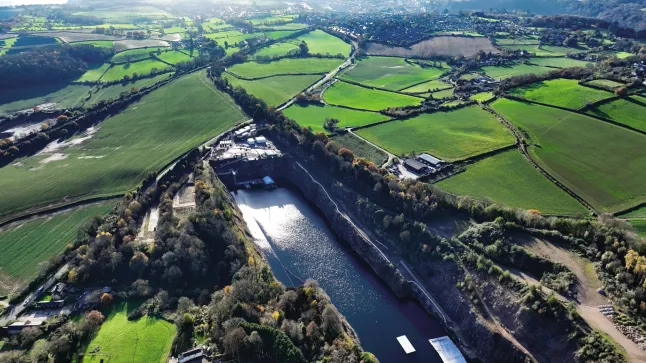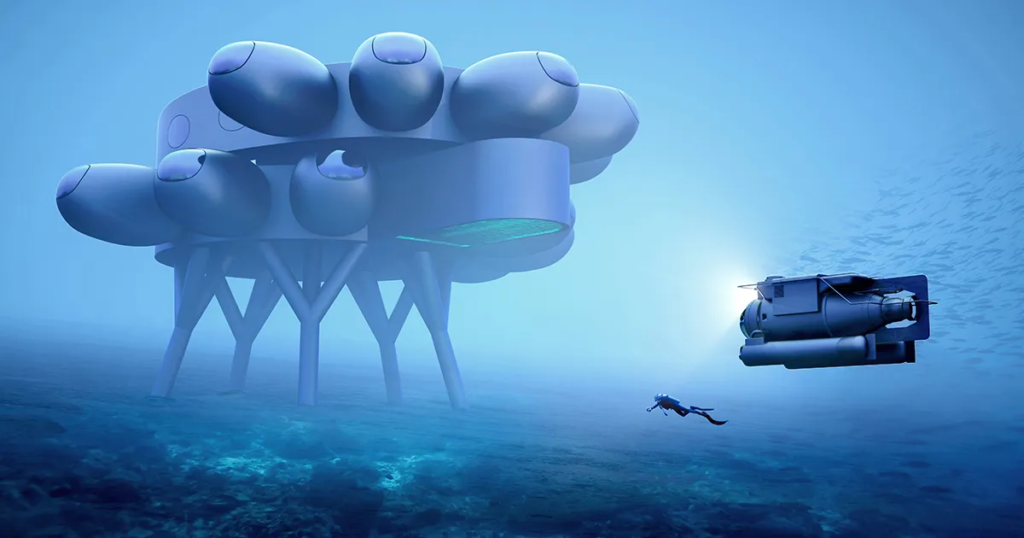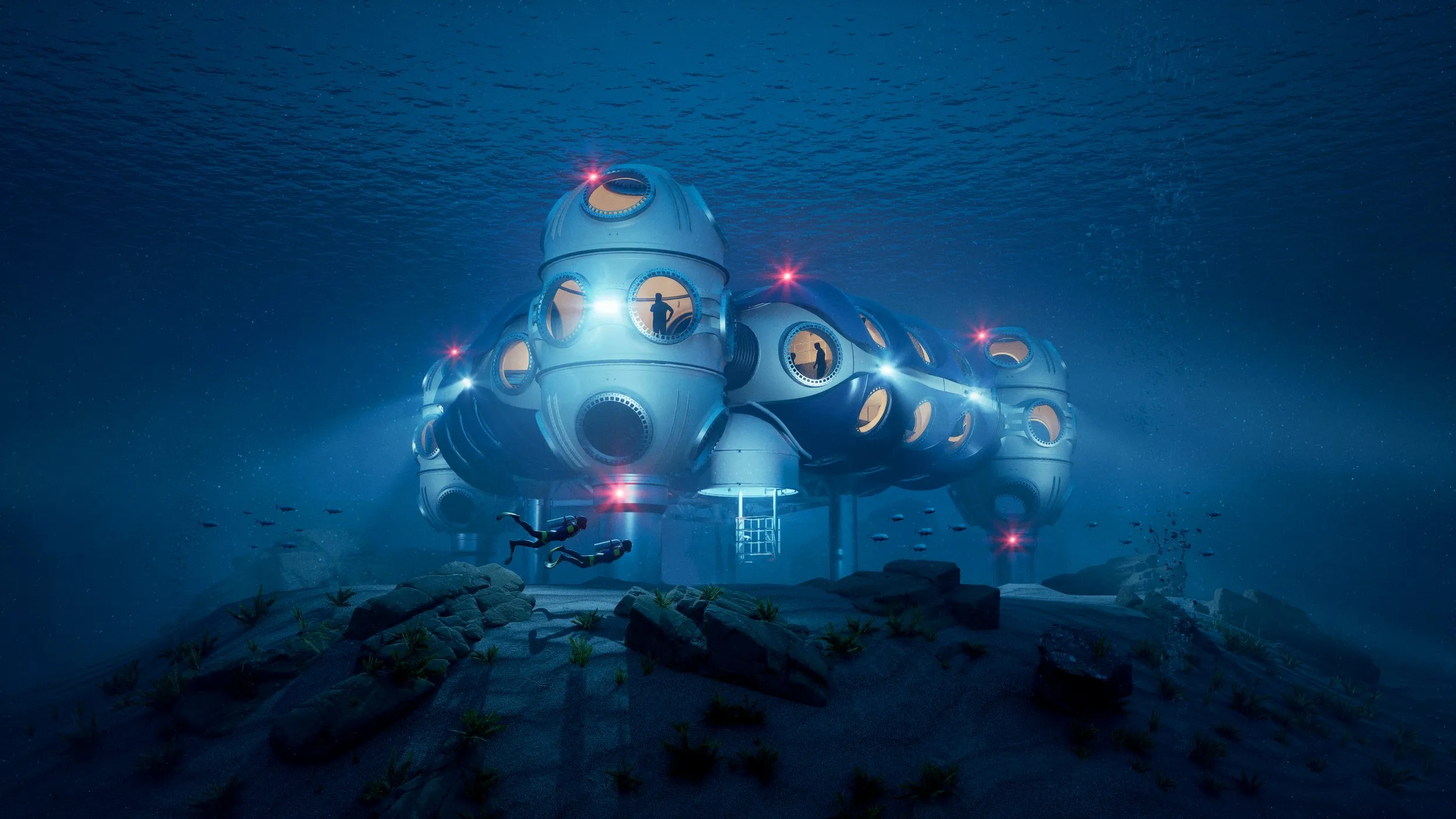A groundbreaking initiative is set to change the way humans interact with the ocean. DEEP, a company based in Gloucestershire, UK, has unveiled plans to create an advanced underwater base designed to support human life for extended periods.
This project, expected to be operational by 2027, aims to facilitate long-term human presence beneath the ocean’s surface, drawing comparisons to the International Space Station in its potential for scientific advancement and exploration.
The base, known as the Sentinel platform, will be located up to 200 meters underwater and is designed to accommodate six or more individuals.
By establishing a permanent human presence in the depths of the ocean, DEEP is pushing the boundaries of technology and marine science.
With oceans covering two-thirds of the Earth’s surface and playing a critical role in generating oxygen and regulating the climate, this initiative offers unprecedented opportunities to expand our understanding of marine ecosystems.
Just as space exploration has unlocked new knowledge about the cosmos, deep-sea habitation could revolutionize our understanding of the planet’s most mysterious environment.
The Sentinel Platform: A Vision for Underwater Living
Unlike traditional submersibles or research stations that allow for only temporary stays, DEEP’s Sentinel platform is designed to sustain human life underwater for prolonged durations.
This ambitious project includes not just the habitat itself but an entire ecosystem of next-generation submersibles, advanced diving suits, and a comprehensive training and safety framework provided by the DEEP Institute.
According to Steve Etherton, President (EMEA) of DEEP, the Sentinel platform is more than just an underwater base; it is a complete system designed to enable sustained human presence in the ocean.
He compares it to NASA’s role in space exploration, emphasizing that DEEP is not merely a manufacturer of underwater structures but a pioneer in oceanic research and development.
By integrating cutting-edge engineering with safety protocols, the company aims to create a viable underwater environment that could pave the way for future advancements in marine habitation.
Read : This Man Became Ten Years Younger Spending 93 Days Under the Atlantic Sea
The platform will serve multiple purposes, ranging from scientific research and marine conservation to commercial and industrial applications.
Scientists will be able to conduct in-depth studies on ocean biodiversity, climate change, and deep-sea ecosystems, while industries such as deep-sea mining and offshore energy exploration could benefit from having a sustainable underwater base.
Engineering Marvel: Pushing the Limits of Technology
Creating an underwater base capable of supporting human life presents significant technological challenges, but DEEP has invested years of research into advanced manufacturing techniques and materials science.
One of the most notable achievements in this regard is the development of the largest Wire Arc Additive Manufacturing (WAAM) 3D printing capability in Europe. This technology allows for the efficient production of high-strength, corrosion-resistant structures essential for withstanding the immense pressure and harsh conditions of the deep ocean.
DEEP has also secured a crucial milestone in the project’s development by receiving design approval in principle from DNV, a globally recognized certification and classing authority. This approval signifies that the Sentinel platform meets stringent safety and engineering standards, ensuring that it is not just a theoretical concept but a viable reality.

Michael Shackleford, DEEP’s President of Global Infrastructure, has confirmed that manufacturing has already begun, highlighting the company’s commitment to bringing this vision to life. Unlike many futuristic projects that remain confined to conceptual renderings and funding pitches, the Sentinel system is actively undergoing advanced engineering and construction.
The Future of Human Life Beneath the Waves
The successful deployment of the Sentinel platform by 2027 could mark the beginning of a new era for humanity—one where living underwater is no longer confined to science fiction. By establishing a permanent presence in the ocean, DEEP’s initiative could open the door to innovations in marine science, environmental conservation, and even underwater tourism.
One of the most profound implications of this project is its potential impact on climate change research. The oceans play a vital role in regulating global temperatures, absorbing carbon dioxide, and sustaining biodiversity.

By enabling scientists to conduct long-term studies from within the ocean itself, the Sentinel platform could provide invaluable insights into how marine ecosystems are changing and what steps can be taken to mitigate environmental damage.
Moreover, this initiative could lead to further advancements in deep-sea exploration, unlocking the potential for discovering new species, underwater resources, and even archaeological sites hidden beneath the waves.
Just as the International Space Station has become a hub for space research and international collaboration, the Sentinel platform could serve as a center for global cooperation in oceanic exploration.
As DEEP continues to push forward with its mission, the prospect of humans living and working underwater for extended periods is becoming increasingly feasible.
With cutting-edge technology, rigorous safety measures, and a bold vision for the future, the Sentinel platform represents a significant leap toward turning humanity into an aquatic species. By 2027, the dream of underwater living may finally become a reality.

